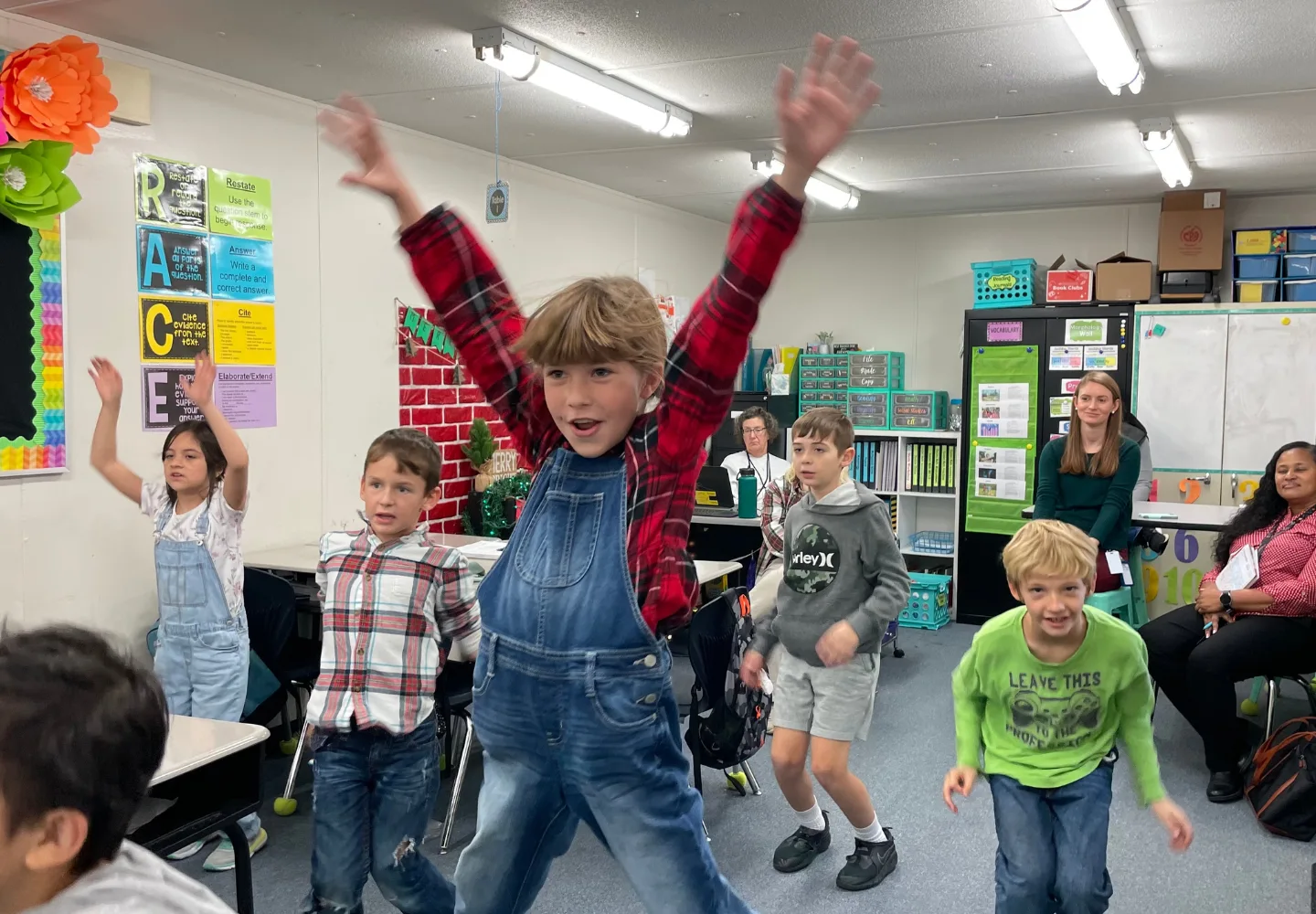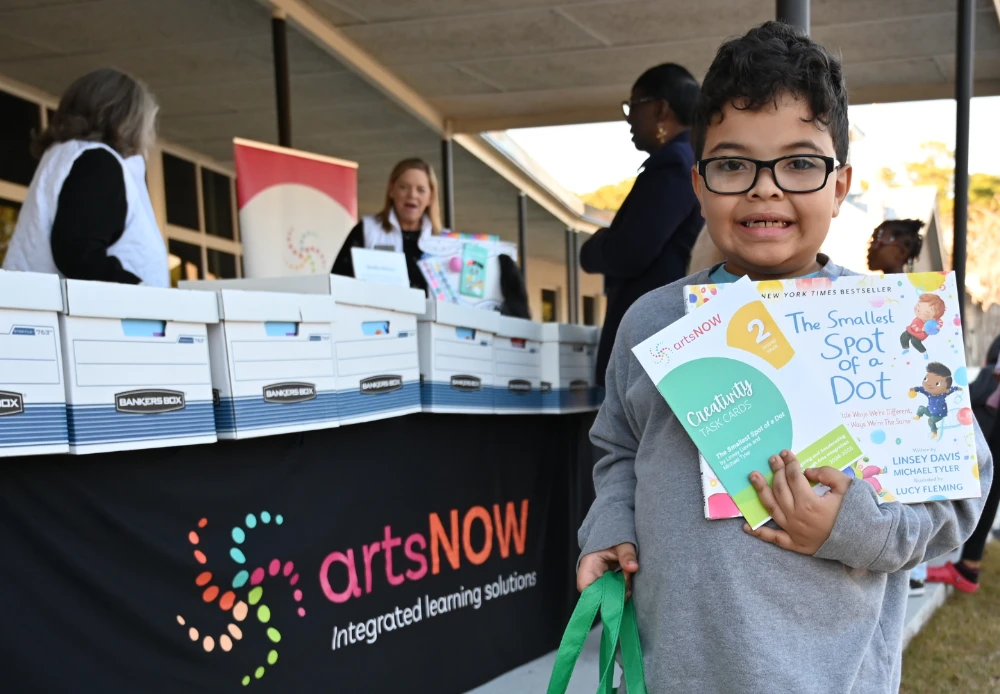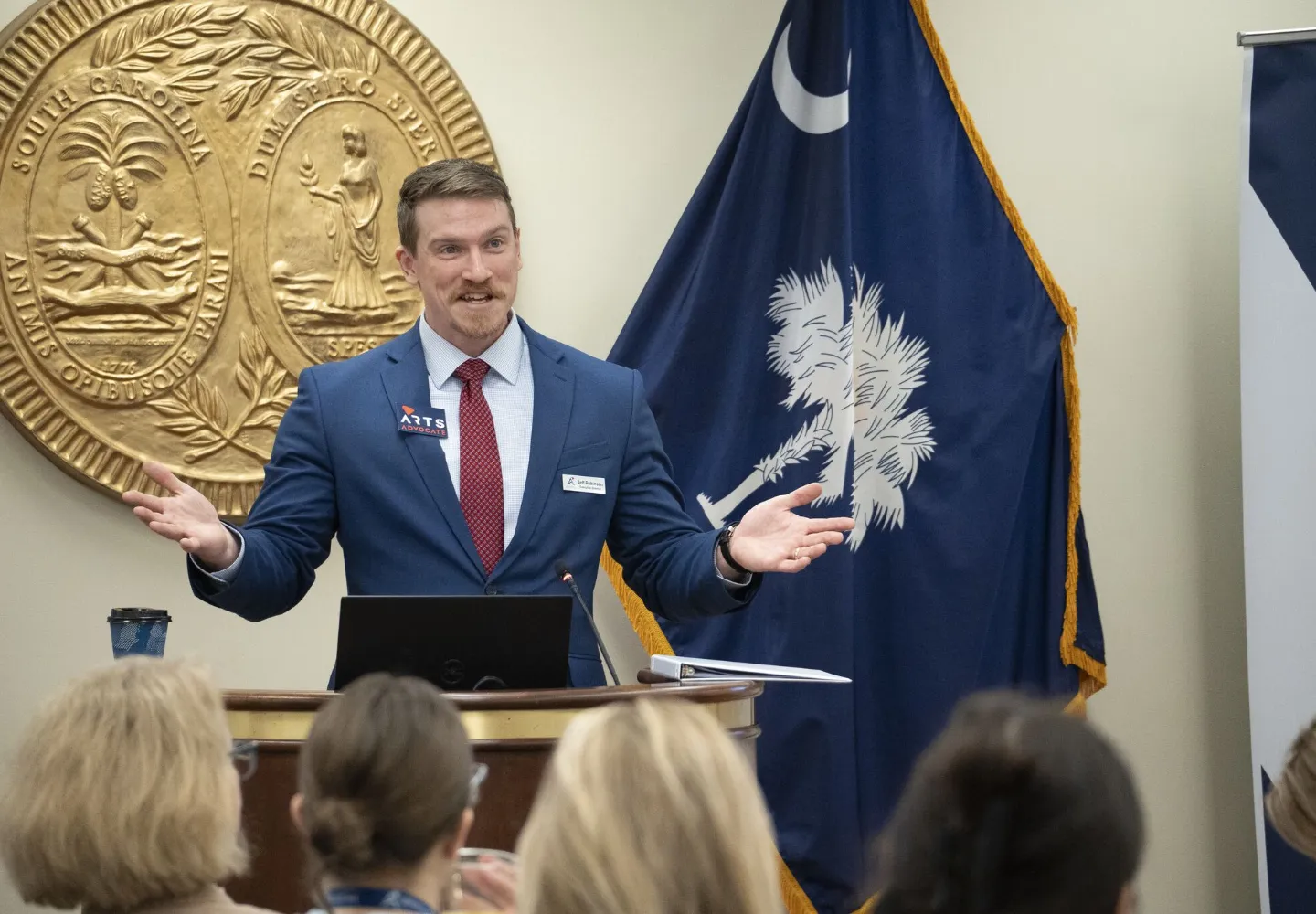Advocating for the arts in education is more important than ever. Since 2022, ArtsNOW has partnered with Arts Grow SC and the South Carolina Arts Commission to bring arts-integrated learning to schools across South Carolina, impacting more than 10,090 students in the state. In this Q&A, Executive Director of the South Carolina Arts Alliance Jeff Robinson shares his perspective on what we can do to ensure creative learning remains a priority.
With over a decade of experience as an arts educator and administrator, Jeff has dedicated his career to expanding access to arts education and supporting policies that empower students and teachers. His work has spanned from directing award-winning school music programs to shaping statewide arts initiatives through leadership roles at the South Carolina Governor’s School for the Arts and Humanities, the SC Arts Alliance, and Palmetto State Arts Education. As a lifelong musician and advocate, he brings a unique perspective on the power of the arts to transform learning.
Q: From the band room to the boardroom: How has your journey as a music educator shaped the way you advocate for arts-integrated learning today?
Jeff: The SCAA's mission covers the whole creative sector, but I think I'm always at my strongest when I'm advocating for arts education. What's great is that arts education paves the way for all of the messages I bring about the entire industry -- whether we're talking about jobs, the creative economy, or even the role that creativity plays across other sectors. My journey as a music educator has proven to be very valuable because I can always advocate from a place of personal experience.
When I'm speaking with educators, I can establish a certain amount of trust because I've been in their shoes. When I advocate for arts-integrated learning, I talk about the joys and success that students experienced in the band room and say confidently that I want every teacher in every subject to have access to that kind of classroom experience. My wife is also a band director, so it still remains personal to me.
Q: In your work with the SC Arts Alliance and Palmetto State Arts Education, you’ve had a front-row seat to policy and advocacy efforts. What’s one misconception about arts education policy that you wish more educators and community leaders understood?
Jeff: As a topline issue, there is very little difference between "arts education policy" and "education policy" because a policy that impacts educators, schools, and classrooms will, by default, impact arts educators/education.
What I want to make sure educators and leaders understand is that most of the time, we're just advocating for the arts to be considered in policy decisions. If there are changes to the way the school day is structured, make sure there are no unintended outcomes for arts learning. When new funding streams are unlocked, be sure that the arts are specifically mentioned, so administrators know that they can (and should) use those funds for arts integration across the curriculum or to support arts programs and educators.
I used to talk to legislators a lot as a band director whenever there was a discussion about adding new testing requirements to make sure they knew the negative impact that "testing season" was having on my classroom environment or my ability to prepare for performances at the end of the year. It's really important that they hear all potential consequences, but especially from arts educators.
Q: If arts integration were a superhero, what problem would it be solving in education today, and how would it defeat the villain?
Jeff: Student engagement. The research on this is clear. Students who are more engaged in learning will experience better outcomes -- pick whatever measure you'd like. What's even better is that this is not new research. It's been demonstrated time and time again by those willing to try it.
The "villain" is definitely not the policymakers or the education leaders. It's the misconception that we tackle the deficiencies in our current education system, and then we can devote resources to the arts. But that's just not the case. We can tackle those issues through the arts. Arts integration works alongside math, science, English, and social studies standards, so we don't even have to take away from those in order to support arts learning.
So, how does the superhero defeat the villain? Dispel that misconception by creating opportunities for decision-makers to experience arts integration firsthand. Talk only goes so far because the power of the arts is meant to be experienced.
Q: If you could challenge every school leader to take one action this year to strengthen arts integration in their schools, what would it be—and why?
Jeff: Empower educators by giving them the space to try a different approach.
Send them to a professional learning opportunity. Invite them to collaborate with their colleagues (and with school leaders) by sharing what they've learned. Remove the many pressures that educators experience on a daily basis by allowing them to be creative in how they engage their students. This is how we move the needle.
Q: And finally, a fun one—your cat, Lucky, has a front-row seat to your work. If she could advocate for arts integration in schools, what would her argument be?
Jeff: I like to joke that Lucky is my co-worker when I'm working from home. She'll disappear for hours at a time, but whenever I log onto a Zoom call and she hears other voices, she comes running into the room and jumps on my lap. So Lucky understands that one of the most important goals for any type of advocacy is getting a seat at the table.
But more importantly, Lucky understands the importance of play. Cats are curious, and they learn about the world around them by indulging that curiosity, finding creative solutions to problems, and always finding time to play. The arts promote the joy in playful learning -- not as the opposite of work, but as an engaging, skills-based approach to discovery, creativity, and innovation.
Advocating for arts integration isn’t just about promoting the arts—it’s about reshaping education to better serve students. As Jeff Robinson emphasizes, engagement is the key to meaningful learning, and the arts provide a proven pathway to achieving it. By ensuring that the arts are considered in education policy, empowering teachers with the tools to integrate creative learning, and giving decision-makers firsthand experiences with arts integration, we can break down misconceptions and build a stronger, more effective education system. The arts aren’t an extra—they’re essential.
We are grateful to Jeff Robinson for sharing his insights and for his unwavering commitment to advancing arts education. To connect with Jeff and learn more about his work, you can reach out to him on LinkedIn and visit the SC Arts Alliance’s website here.





